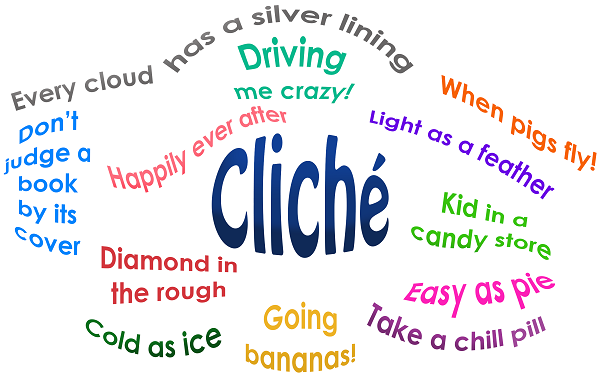26 tips for more effective fundraising writing
Do you want to become the best possible fundraising writer possible? These 26 tips from expert Jeff Brooks will help you on your journey towards that goal.
- Written by
- Jeff Brooks
- Added
- November 28, 2019

1. Write the call to action (the reply device or landing page) first
It’s very un-zen to say it, but fundraising is more about the destination than the journey. You’re going to arrive a lot more successfully when you know exactly where you’re going.
2. Write the thank-you letter next
I find it very helpful to express thanks before fully expressing the ask. As in tip #1, it can clarify where you’re going.
3. Think of 25 reasons why a donor should give to you
Then, get rid of all the reasons that are some version of “because we/our processes/our values/our staff are awesome.” Then start over until you have 25 donor reasons a donor should give to you.
4. Ask yourself, ‘How would the trashy tabloid press write this?’
Low-brow publications know the value of the amazing, the lurid, the outrageous, the unexpected — because they live or die by impulse purchases. Same with click-bait websites. Are you doing that, or are you imitating ‘respectable’ journalism, purposely keeping it as colourless and purely factual as possible? Guess which approach gets more readership — and raises more funds.
5. Ignore your brand guidelines
Your brand guidelines are meant to sharpen and define your message and make it consistent. But there’s usually a fatal flaw: the guidelines are all about you, not about your donors. They’re all about self-focused communication, and that will hurt your fundraising. There are pro-fundraising brand guidelines out there (I’ve seen a couple of them) … but they are truly rare.
6. Show, don’t tell
If you’ve ever taken a creative writing class, you’ve heard this. It’s good advice. It’s easy to assert that something is sad, or great, or special, or cutting-edge. It’s more persuasive to paint the picture that add up to those things.

7. Overdo it
Be too dramatic. Too emotional. Too strong. Eight times out of ten, you’ll realise later that you didn’t overdo it at all. The other two times — well, it’s much easier to tone it down than it is to pump up weak and underdone writing.
8. Use your data
You know quite a bit about the people you’re writing to — their names, their cities, what and when they’ve given, and more. Use these facts to make your copy more personal and relevant. Just make sure you don’t sound awkward and robotic.
9. Flunk your English teachers
Your teachers meant well and they probably taught you many useful things. But not everything they taught was useful, especially for fundraising. Paragraphs don’t have to start with topic sentences and be complete units of meaning. Passive voice is not all that bad. Neither are sentence fragments. (Read the confessions of a former English teacher: How to Write Like a Nonprofit Genius and Motivate People to Join Your Cause).
10. Write at low grade level
Keep your writing at around sixth grade reading level (so about 11 to 12 years old, for non-Americans). It’s just easier to read. Don’t worry about ‘talking down’ to your donors — grade level is about ease of reading, not education. The easier it is to read, the more it will get read — and the more you’ll raise. Check your readability with the grammar-check function in Word or try the excellent Hemingway App.
11. Repeat yourself
Whatever it is that you want people to do, tell them that thing again and again and again. Repeat yourself because you don’t know if they understood or even noticed it the first and second times. Repeat yourself because hardly anyone starts at the beginning of your message and reads every word straight through to the end. Repeat yourself because it works!
12. Annoy yourself
You are not your donor. That’s one of the most important truths you can know, and it has a dramatic side effect: Messages that motivate donors very often will turn you off. It will seem simplistic, emotional and repetitive. Sometimes it helps to make your own distaste a barometer for effective fundraising.
13. Use a cliché or two
There’s a reason clichés catch on. They express things that people often want to express — in short (and sweet) ways that are easy (as pie) to remember. Fundraising isn’t creative writing class — you aren’t going to lose points for lack of originality. However, you will get extra credit for motivating more people to give.

14. Cut back on adjectives and adverbs
If your nouns and verbs aren’t doing the job, adjectives and adverbs aren’t going to pick up the slack. Well-placed modifiers can add zing. But most of the time, they just make the copy harder to read — and make you sound like a huckster.
15. Avoid huge numbers
Donors don’t want to solve a problem because it’s big. They want to solve it because it’s solvable. Yes, many thousands of children die from hunger-related causes every day, and thousands are diagnosed with terrible diseases, and the glaciers are receding at an alarming rate. It’s mind-boggling. The fact that it’s mind-boggling is exactly why it’s poor fundraising. Give donors the opportunity to make a difference that they can grasp and afford — and then another and another.
16. Free yourself from grammar
Don’t deliberately make bonehead grammar errors. But sometimes getting your grammar precisely correct makes you come across as a schoolmarm, which — unless you’re an actual schoolmarm — is pretty unsympathetic. For instance, correct use of “whom” doesn’t sound natural to most people. Avoid it. If you can’t stomach doing it wrong, revise the sentence so it doesn’t come up. Any correct grammar that people don’t commonly use in speech is a candidate for flouting or revising around.
17. Replace at least one paragraph in your next fundraising project that’s about you
Replace it with a paragraph that’s about your donor. This will make your message a bit more engaging and persuasive. Keep doing this!
18. Limit your paragraphs to six lines
Long paragraphs are forbidden territory. Anything more than seven lines is long. Most paragraphs should be one to four lines.
19. Read everything you write out loud
This is one of the best ways to make sure your copy is clear, colloquial, and easy to read. If you stumble while reading, sound pompous or arrogant, or just sound a bit incoherent, your copy needs more work.

20. Cut your first paragraph
No joke. It’s like magic. Most likely, your first paragraph is a warm-up — and your real lead is your second or even third paragraph. Give it a try. It’s one of the quickest and most sure-fire copy revisions I know.
21. Make the message longer
I know you wouldn’t read a long letter. Neither would I. For all we know, nobody reads long letters anymore. But we do know long letters work. Nearly every time I’ve tested, longer letters worked better than shorter ones. (A major exception is when you’re raising funds for a major emergency that’s heavily in the media.) Add more pages to your letter — or let that email be long, and you’ll almost surely get more response. See The Most Controversial Non-Controversy in the Fundraising World.
22. Use photos sparingly — but use them
They say a picture is worth a thousand words. So choose photos carefully. Too often we use photos that add nothing to the message or even contradict the story we intend to tell. If the photo and the words are in conflict, guess which one will carry more persuasive weight? Make sure the photos you use support the message you want to get across.
23. Underline stuff
Emphasis and variation are great for readability. So underline key points. Also use bold, italics, and other ways to draw the eye. Just don’t overdo it, because too much emphasis is the same as no emphasis at all.
24. Use black serif type over a white background (in print)
Any variation from this — using sans-serif type, coloured type, white type over colour, even black type over a tint — will meaningfully degrade the reading comprehension of your donors and hurt response. (It’s worth noting that sans-serif fonts are more readable on screens.)
25. Use 13-point type (or larger) for body copy
Your donors wear bifocals. Small type is hard for them to read. Would you rather be part of their daily struggle to read small type or a strain-free oasis in their day? Which choice do you think will make them more likely to respond?
26. Bypass most of your reviewers
Committees kill fundraising. They systematically drain life and power from anything they touch, while bulking up the message with irrelevancies and worse. It’s not that they’re trying to make it worse — that’s just what committees do. Work without committees, and you’ll see improvements — to your copy and your revenue. See How To Free Your Fundraising From The Destructive Power Of Committees.
















